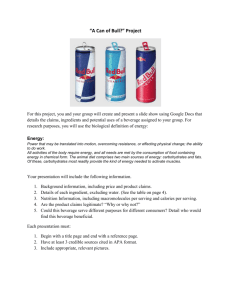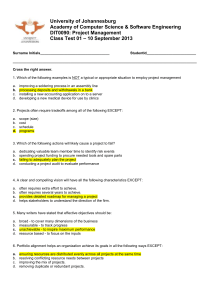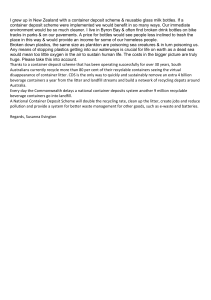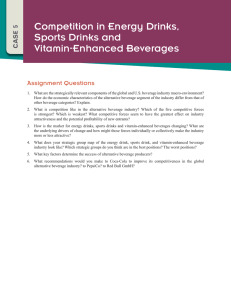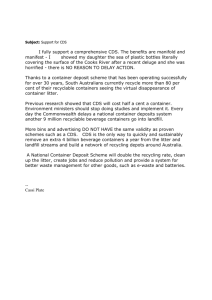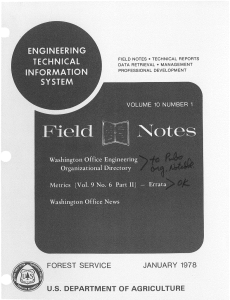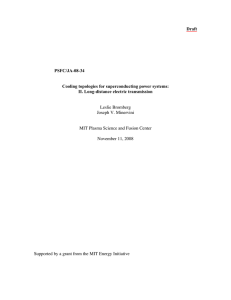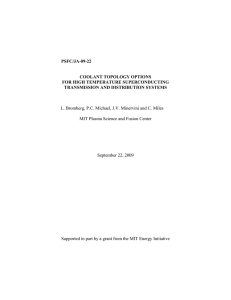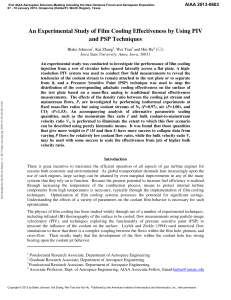Quick Cool System Nicholas Stegeman Figure 1:
advertisement
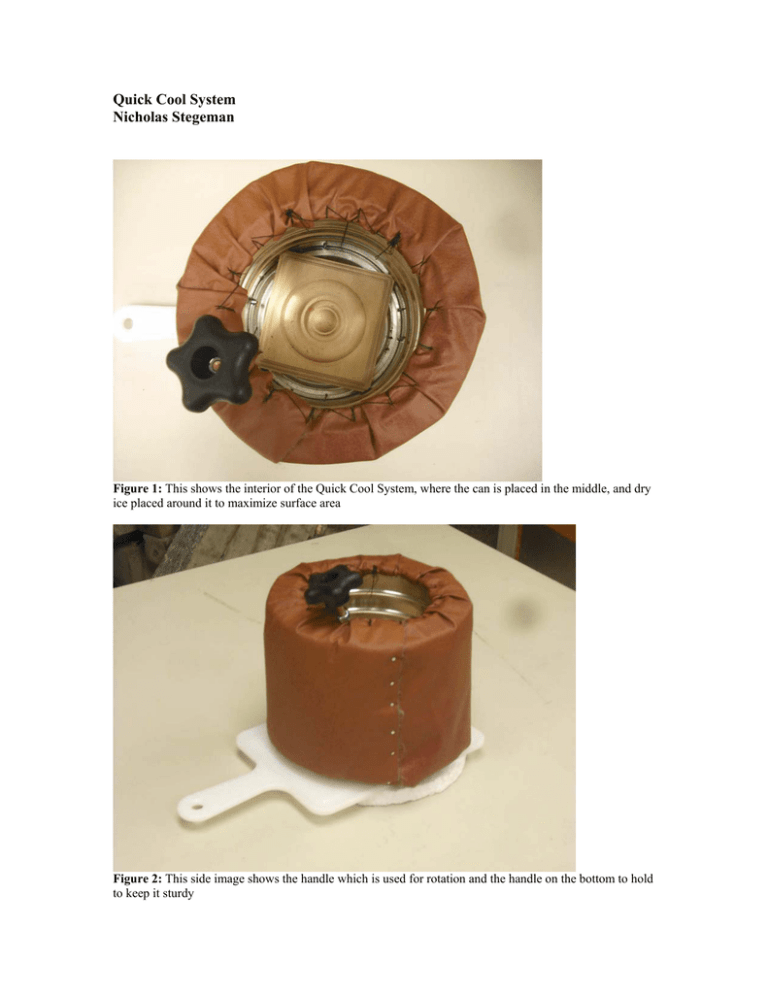
Quick Cool System Nicholas Stegeman Figure 1: This shows the interior of the Quick Cool System, where the can is placed in the middle, and dry ice placed around it to maximize surface area Figure 2: This side image shows the handle which is used for rotation and the handle on the bottom to hold to keep it sturdy Summary This design solved one of the simple inconveniences many people face of sacrificing enjoyment of a cool beverage for the availability of a warm one. This problem occurs after times like coming home from the store with a new twelve-pack of coke, and having to wait for them to cool in the fridge before they can be drank. Another situation would be where the beverage cannot be kept in the fridge, like a long trip where there is limited space in a cooler. The device solves this by cooling down a can in about a minute and a half, using coolant that can be easily obtained and stored. The basic requirements for this product are 1. (Easy to use)( Can of soda is easy to position inside device) 2. (Cools a beverage “quickly”) 3. (Durable enough to not break after falling over, etc.)( Can be used many times without breaking) 4. (Looks stylish enough to show to others) 5. (Low maintenance) 6. (Cools beverage to cold enough to be enjoyed, but not too cold as to freeze it) 7. (Light enough to be carried by a person)( Small enough to fit into a backpack, not much larger than the can itself) 8. (Does not make too much noise) These requirements were fulfilled by the product, and many of the concepts considered along the way. Besides the ideas used in the final design, concepts like using a liquid coolant were considered. Other concepts were to use a thermos for the entire container, to both utilize the size of a small cylinder to cool the can, and to use it for longevity of storing coolant. Another basic concept to solve the issue of keeping the can moving during the cooling process was to attach a motor. This would have made the device more automatic, but introduced problems with timing, the amount of power to supply the device, where the power would come from, which all limit mobility and introduce more safety limitations. Another concept that was considered was to have the device rotate along the horizontal axes to provide rotation against gravity for the fluid inside, possibly cooling it faster. The final product uses concepts close to the ones suggested, but weighs in the most effective method compared with simplicity and time available. The base of the device is hard plastic, attached to a Lazy Susan, which is attached to the container. The container is an aluminum can surrounded by rings of Styrofoam, cut to the outer diameter of the can, and glued to each other and the can. At the base of the can is a wood block. This block serves the purpose of having rings cut into it for the can of soda to easily be placed along the axis of rotation, and serves to provide material for the Lazy Susan to be attached with screws. This entire container is wrapped in faux leather covering purely for looks. There is a handle attached to the top to allow a place to grip the container when it is rotated. To use, an empty can is placed in the middle, and dry ice is placed around the can. The can is then lifted out and replaced by a full beverage, and using the handle to rotate, the device is turned for about a minute and a half. This process cools the can down to the enjoyable temperature of 4 degrees Celsius.
